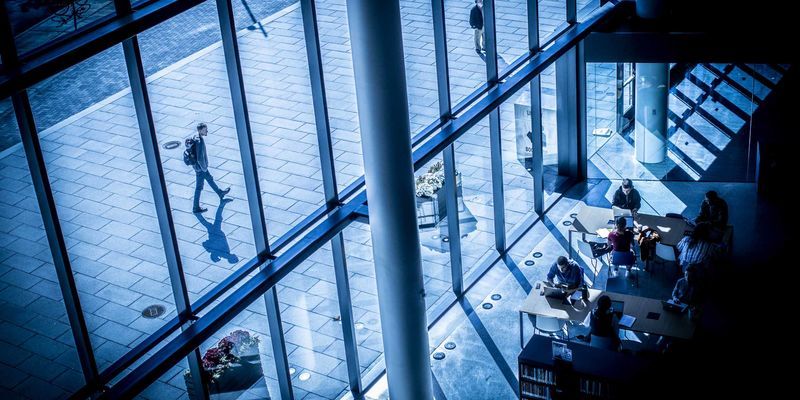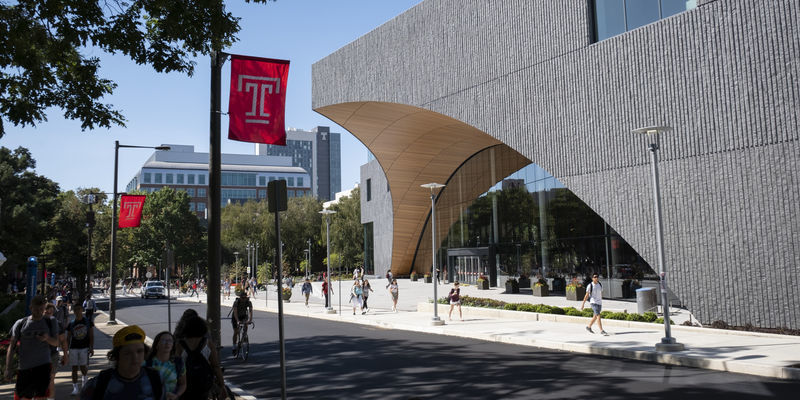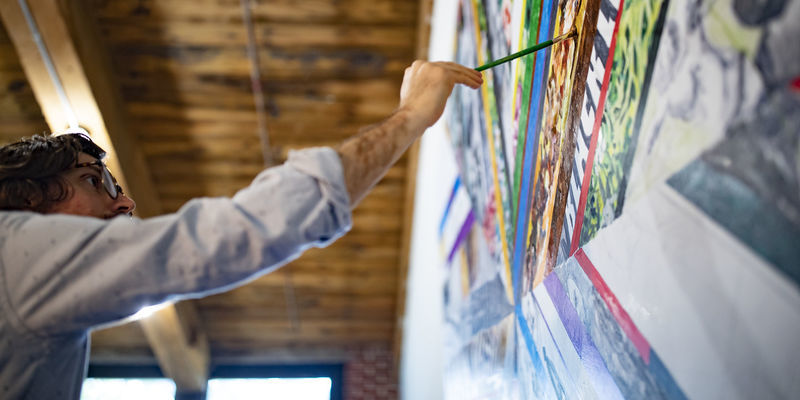Temple Libraries provides photos for new Philadelphia true crime book
Temple Libraries supplied a trove of photos for the upcoming book True Crime Philadelphia: From America’s First Bank Robbery to the Real-Life Killers Who Inspired Boardwalk Empire.

One day when Kathryn Canavan was conducting research for her book True Crime Philadelphia, she discovered a photograph taken the day after notorious gangster and bootlegger Pius Lanzetta was murdered in 1936, and knew she had to include it.
“Temple had a picture of children posing outside the candy store the next day,” Canavan said. “Now, inside there’s this horrific gangland slaying, but that picture outside really captures a certain time period in Philadelphia.”
After working as a journalist for 29 years covering crime, municipal government, courts, religion, business, lifestyle and writing the book Lincoln’s Final Hours, Canavan turned her efforts toward True Crime Philadelphia: From America’s First Bank Robbery to the Real-Life Killers Who Inspired Boardwalk Empire for Lyons Press. In order to help tell the true crime stories, she used vivid photographs from Temple Libraries.
In the book Canavan brings to life the stories of the gangsters who inspired fictional characters in the popular HBO series Boardwalk Empire. She focused some of her research on the Lanzetta brothers—Leo, Pius, Ignatius, Lucien, Willie and Teo—who were portrayed as the D’Alessio brothers in the show.
Canavan used Temple Libraries to include a mugshot of Pius Lanzetta, the scene where he was murdered, an up-close headshot of Willie Lanzetta and a photo of his corpse sewed inside a burlap sack, among other images.
Although Canavan is not from Philadelphia, her husband John Sweeney, CLA ’79, grew up in Port Richmond, and he urged her to write the book because Philadelphia has a rich history of true crime.
“When I went back, I went back to 1787. Because Philadelphia is such an old city. It was the site of America’s first bank robbery, America’s first kidnapping and Pennsylvania’s first octo-murder,” Canavan said.
She chose Temple Libraries because her husband is an Owl and she knew Temple’s Urban Archives were the repository for old city directories, fire maps and other records, she said. She also wanted to use photographs from George D. McDowell’s Philadelphia Evening Bulletin Collection, which is located in Temple Libraries.
Canavan decided to use the Evening Bulletin Collection because the Bulletin was the largest evening daily paper in the U.S. when the photos were taken and they employed some of the country’s best photographers, she said.
“The photos in Temple Libraries’ stellar collections perfectly capture the moments I wrote about in True Crime Philadelphia,” Canavan said.
Canavan credits Temple Libraries with helping her tell the story of city crime, ranging from the knife murder of a wealthy woman to a massive arsenic murder ring in South Philadelphia.
“I did use some of the Urban Archives,” she said. “It wouldn’t be the same book without these vivid photographs and they wouldn't have happened without the curation of Josue Hurtado, coordinator of public services and outreach at the Special Collections Research Center.”
After receiving an email from Canavan, Hurtado began searching the Special Collections archive, which houses an extensive collection of historical Philadelphia resources.
“She just sent us an email and told us what she was working on and then I helped find [and] identify some photos and sent her some sort of low res versions, just to gauge what photos she wanted to use,” said Hurtado.
The Special Collections Research Center is a good place to come if an individual is looking for interesting and really great historical resources on Philadelphia and the area, or even the history of Temple itself, he said.
Even though the COVID-19 pandemic prevented Canavan from going to the libraries in person, Hurtado and staff from the Special Collections library provided digital photos to her quickly.
“They’re still in their offices, working from home and still able to get digital photos to people. I mean, they really did a great job,” said Canavan. “It was just an unprecedented time and they still got everything out and I was able to meet all my deadlines because of them.”
Canavan’s book has 42 illustrations total. Canavan used 13 photos from the Special Collections archive and said they were the most vivid photos in the book.
Hurtado enjoyed assisting Canavan find the photographs to tell the story of Philadelphia true crime and encourages more people to use Temple Libraries.
“We’ve worked with all kinds of researchers doing all kinds of different projects. We’ve got faculty members, we’ve got students doing assignments, but we also have community members who are interested in global history or family history and people writing books,” Hurtado said. “I always feel very happy to see something get published using our materials.”
True Crime Philadelphia: From America’s First Bank Robbery to the Real-Life Killers Who Inspired Boardwalk Empire will be published on Nov. 15.
—Matthew Aquino


